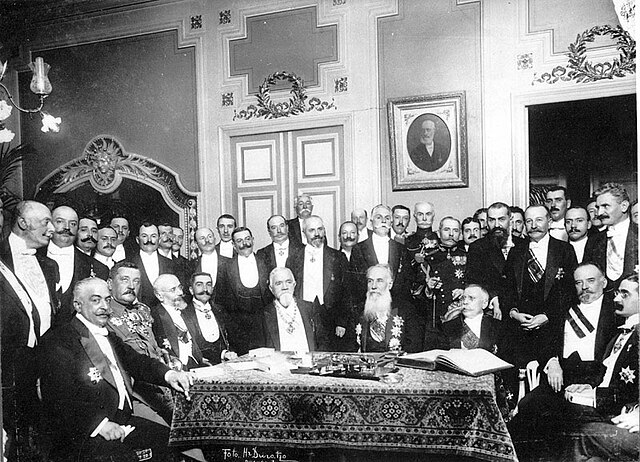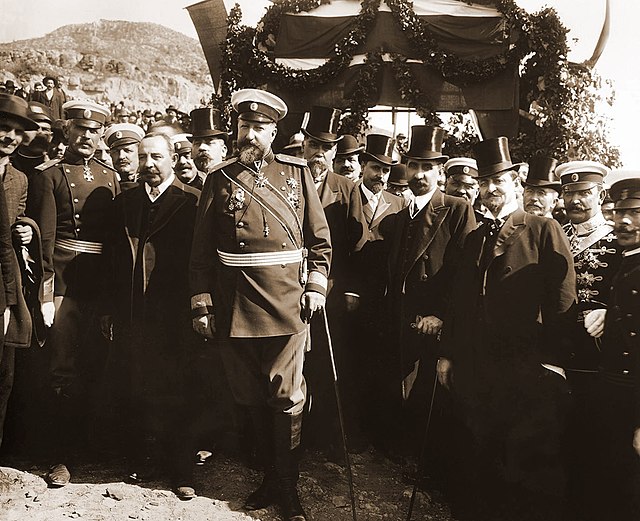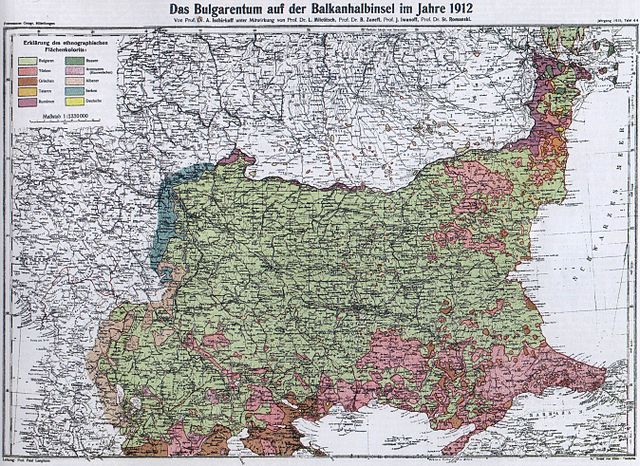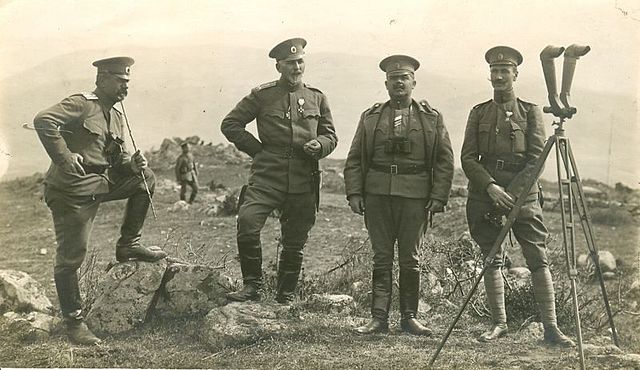Treaty of Bucharest (1913)
The Treaty of Bucharest was concluded on 10 August 1913, by the delegates of Bulgaria, Romania, Serbia, Montenegro and Greece. The Treaty was concluded in the aftermath of the Second Balkan War and amended the previous Treaty of London, which ended the First Balkan War. About one month later, the Bulgarians signed a separate border treaty with the Ottomans, who had regained some territory west of the Enos-Midia Line during the second war.
Borders of the Balkan states after the Treaty of Bucharest (below)
Delegations to the peace conference.Eleftherios Venizelos; Titu Maiorescu; Nikola Pašić (sitting in the center); Dimitar Tonchev; Constantin Dissescu; Nikolaos Politis; Alexandru Marghiloman; Danilo Kalafatović; Constantin Coandă; Constantin Cristescu; Take Ionescu; Miroslav Spalajković; and Janko Vukotić.
Punch cartoon on the treaty: King Carol I of Romania holds King Peter I of Serbia and King Constantine I of Greece at gunpoint while he steals Southern Dobruja from Tsar Ferdinand I of Bulgaria.
The Tsardom of Bulgaria, also referred to as the Third Bulgarian Tsardom, sometimes translated in English as the "Kingdom of Bulgaria", or simply Bulgaria, was a constitutional monarchy in Southeastern Europe, which was established on 5 October 1908, when the Bulgarian state was raised from a principality to a tsardom.
Ferdinand I of Bulgaria at the proclamation of Bulgarian independence, 1908
Boundaries on the Balkans after the First and the Second Balkan War (1912–1913)
Areas where Bulgarians were the majority of the population (in light green) according to Anastas Ishirkov (1912).
Bulgarian officers on the Macedonian front






